Golden Globe: Leaders avoid big issues
Published on November 9th, 2022
(November 9, 2022; Day 67) – With the absence of modern equipment, the leaders of the Golden Globe Race fleet had a rare check-in as they arrived at the compulsory Photo Gate at the tip of South Africa to drop letters and video films before continuing on around the world without stopping.
Simon Curwen (GBR) was first to the Cape Town gate on November 6. After being unable to communicate with the rest of the fleet, possibly due to a faulty SSB radio installation, he was happy to see people greeting him in Granger Bay, and pleased to learn he was still in first position.
“Bill King and Loïck Fougeron did not make it past Cape Town in 1968, along with five 2018 entrants, so I’m very happy to be here and very impatient to go in the South,” said Curwen. “It has not been too hard so far, as we had manageable winds, but it’s gonna be very different now. The only things I miss are people, my family, friends and the other entrants. The only contacts I’ve had were with passing ships which is rather limited.”
He used the opportunity to go up the mast for three hours to sort out halyard issues, and unlike other entrants, was pleased to not have any barnacles on his hull. His preparation of using several coats sprayed with Nautix A9000 self-polishing antifouling with copolymer, specially destined for long periods of use in heavy fouling areas, is proving to be effective.
“With the first test of the Atlantic, the issues faced by the fleet have mostly been two fold,” noted Don McIntyre, Founder and President of the Golden Globe Race. “Barnacle invasion for the majority and various issues with wind vanes.
“Simon has had none of those, and apart from a broken halyard faced no significant issues, which is a testament to his good preparation and the simplicity of his choices. I am surprised, however, he did not get second halyard for foresails.”
Kirsten Neuschäfer (RSA) and Tapio Lehtinen (FIN) chose very different strategies in rounding the south Atlantic High, with Neuschäfer choosing the longer southerly route in her arrival on November 8th around midnight, covering more ground than Lehtinen but arriving five miles before the GGR 2018 veteran.
Despite their different routes and conditions, she has mostly been sailing downwind while Lehtinen was working his way close-hauled upwind. She had a few barnacles after using three coats of hard and two coats of ablative antifouling, cleaned one side of the hull while delayed by difficult conditions to do the other side.
“I really am enjoying the race and stopped being too fussed about what my position is as I’m having such a good time; I almost don’t want this time to go by so quickly. I really enjoy not having a GPS, because it forces me to be observant, I enjoy not having detailed weather forecasts because it forces me to think more, and because it’s a race and not a delivery, I like sailing the boat as fast as I possibly can!”
Lehtinen, despite a thorough preparation with Jotun hard coating and ablative, has not been able to totally avoid the dreaded barnacles that cost him a hundred extra days in his 2018 GGR but not at the same scale since he counted 60 in 2022 against 3000 in 2018!
This year, Captain Barnacles was determined not to let the crustaceans ruin his round-the-world voyage. Overcoming his fear of sharks and the slightly disturbing thought of swimming alone in the ocean, he did not hesitate to go overboard and get rid of them at the first opportunity.
“It’s funny how I hadn’t sailed the boat for three years after the last race,” he shared. “After the start, I gradually got accustomed to her again and it was like continuing the previous race. I love being at sea and sailing her. I know this gate is part of the race, but the proximity of land stresses me; I am a lot happier a hundred miles out.”
It has not been the case for Pat Lawless (IRL) who has been facing both the barnacle invasion and managing various injuries. However, it is trouble with his windvane that prompted his retirement in Cape Town. While he solved some issues, he does not have spares for his Aries windvane broken bearing, and does not want to be penalized for requiring assistance.
Battling out at close range for 5th place on the water is the first Rustler 36 in the capable hands of GGR Veteran Abhilash Tomy (IND) who lost big in the center of the high pressure. Damien Guillou (FRA) sorted his barnacles and windvane issues, escaped the high pressure and is trucking in 25 knots of wind and big seas, being this morning the fastest in the fleet.
On the other Biscay 36 of the fleet, Michael Guggenberger (AUT) got rid of the barnacles and is expected in Cape town in three days.
Another issue to contend with is the arrival deadline for the Hobart Gate. To avoid sailors getting too late in the season at Cape Horn, after which there is significantly worse weather conditions, a time limit to cross the Hobart gate exists, although there is no time limit for the race itself.
The Notice of Race stipulates that a sailor arriving “at the Hobart Gate after 1200 hrs Local time on 31st January 2023 becomes a GGR Voyager on arrival and may not continue toward Cape Horn earlier than 1000 hrs Local time on 1st December 2023. A Chichester Class entrant arriving at the Hobart gate after 1200hrs Local time on 31st January is withdrawn from the event.”
This is why Suhaili’s position is important on the GGR Tracker, as if Suhaili is ahead of you, then you are late for the Hobart Gate.
It is specially an issue for Arnaud Gaist who has the slowest boat in the fleet, and may not make the Hobart gate on time, since he will be making slow progress this week. Same for Guy Waites, plagued by barnacle problems and currently behind the French entrant. While Waites said in his weekly call that he would try by all means not to lift and end in Chichester Class, he still has a hard task with an uncertain outcome ahead.
Skipping the Cape Town gate to make time for Hobart is not a solution either, because missing a gate for speed issues will automatically put the sailor in Chichester Class. Any other subsequent stop, missed gate or rule infringement, would mean disqualification from the Golden Globe Race.
Event details – Entry list – Tracker – Facebook
2022 GGR competitors:
Abhilash Tomy (43) / India / Rustler 36
Arnaud Gaist (50) / France / BARBICAN 33 MKII (long keel version)
Damien Guillou (39) / France / Rustler 36
Elliott Smith (27) / USA / Gale Force 34
Ertan Beskardes (60) / UK / Rustler 36
Guy Waites (54) / UK / Tradewind 35
Ian Herbert Jones (52) / UK / Tradewind 35
Jeremy Bagshaw (59) / South Africa / OE32
Kirsten Neuschäfer (39) / South Africa / Cape George 36
Michael Guggenberger (44) / Austria / Biscay 36
Simon Curwen (63) / UK / Biscay 36
Tapio Lehtinen (64) / Finland / Gaia 36 Masthead sloop
Retired
Edward Walentynowicz (68) / Canada / Rustler 36 (dropped out, Sept. 8)
Guy deBoer (66) / USA / Tashiba 36 (ran aground, Sept. 16)
Mark Sinclair (63) / Australia / Lello 34 (retired in Lanzarote, Sept. 22)
Pat Lawless (66) / Ireland / Saga 36 (retired in Cape Town, Nov. 9)
About the 2022 Golden Globe Race
On September 4, 2022, the third edition of the Golden Globe Race started from Les Sables d’Olonne, France. Sixteen skippers will face eight months of isolation sailing 30,000 miles across five oceans solo non-stop and unassisted.
In 1968, while man was preparing to take his first steps on the moon, a mild mannered and modest young man was setting out on his own record breaking voyage of discovery. He had entered the original Golden Globe. Nine men started that first solo non-stop sailing race around the World. Only one finished. He was 29 year old Sir Robin Knox Johnston. History was made. Navigating only with a sextant, paper charts and an accurate and reliable time piece, Sir Robin navigated around the world.
In 2018, to celebrate 50 years since that first record breaking achievement, the Golden Globe Race was resurrected. It instantly gained traction with adventurers, captivated by the spirit and opportunity. Eighteen started with five finishers.
To embrace the original race, competitors must sail in production boats between 32 and 36 feet overall and designed prior to 1988 that have a full-length keel with rudder attached to their trailing edge. Additionally, sailors have limited communication equipment and can use only sextants, paper charts, wind up clocks, and cassette tapes for music.
Source: GGR


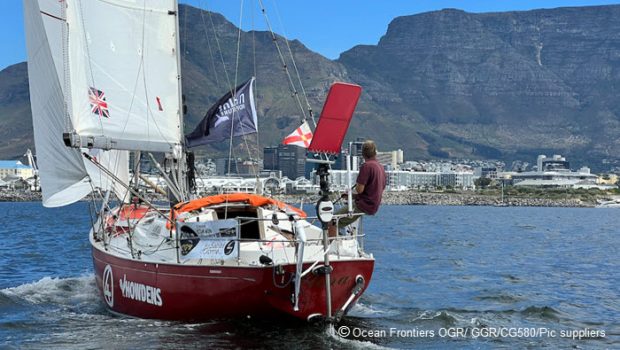

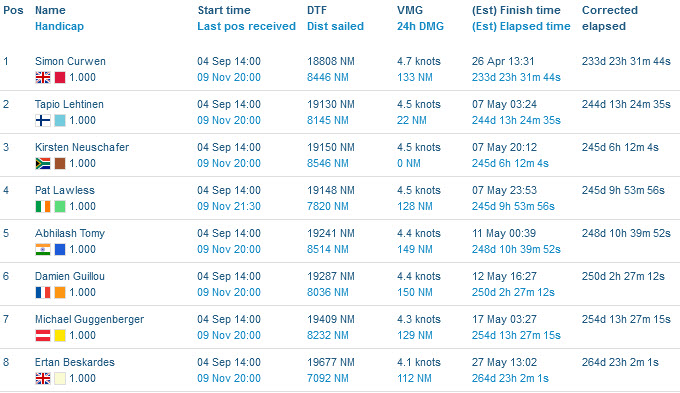

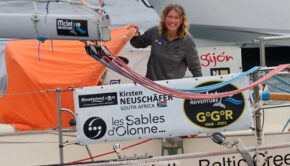
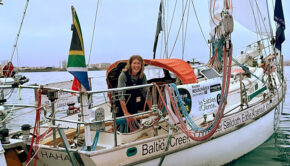
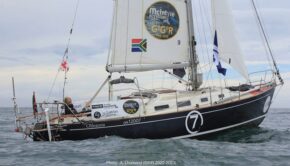
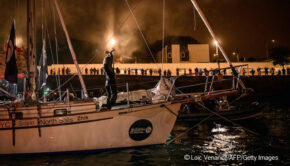
 We’ll keep your information safe.
We’ll keep your information safe.